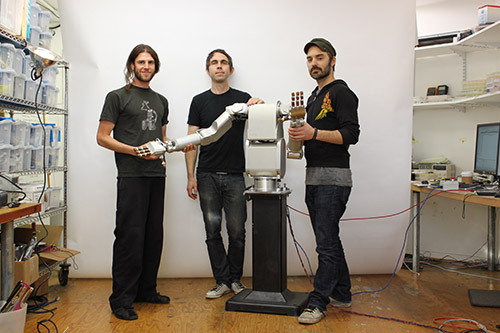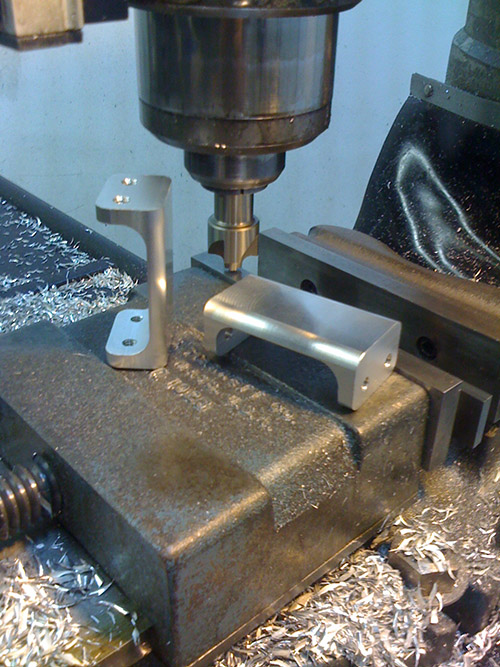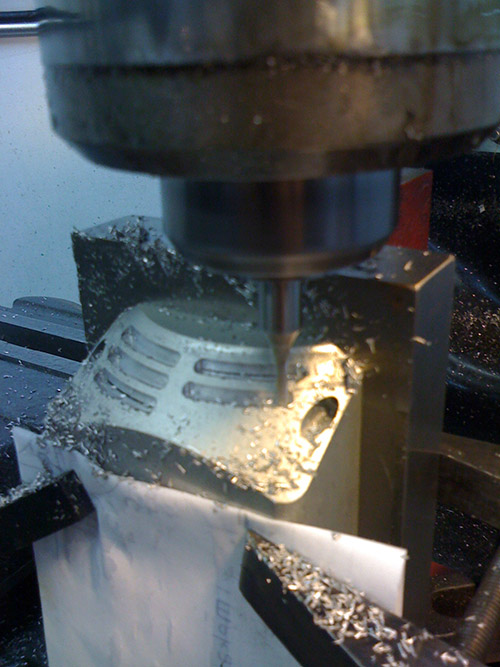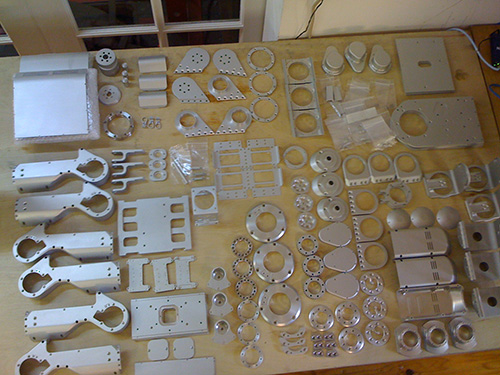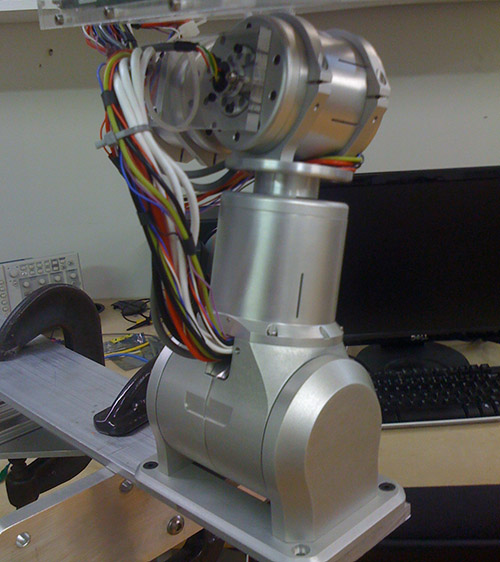|
My lifetime goal, since a child, was to build a humanoid robot. Meka let me take part in that dream.
Let me tell you, it is no easy feat. Building classy, human scale, humanoid robots involves a huge range of electrical, mechanical and software expertise. In order to do useful things the system must support payloads of reasonable mass. Forces can range from quite small at the fingers to rather large at the shoulders. These high forces push not only the mechanical structure but also the thermal capacity of wires and electronic components. Managing these forces while moving the system with graceful motion requires sophisticated controls and software development. Robotics is truly an interdisciplinary engineering excercise.
Working in the fast pace of a small startup requires an ability to rapidly generate and manufacture designs. Often times parts or assemblies end up not looking quite how one might have expected. Be it designer or machinst error, the parts just have to work. Some of the stress and excitement of prototype robotics work is willing the parts together with late hours jumping back and forth between cutting chips on the mills and lathes and troubleshooting assemblies in the build room. It is certainly not for the faint of heart!
Some of what I have accomplished while at Meka include:
- Blank-sheet design and construction of multi-degree-of-freedom, force controlled humanoid arms.
- Implemented Master Sketch modeling framework for rapid development and deployment.
- Designed and built thousands of parts and hundreds of assemblies each year.
- Researched, designed, and built numerous iterations of actuators.
- Managed a team of four engineers to build handfuls of robotic arms.
- Free body diagrams of loading conditions.
- Finite element modeling of most structures.
- Optimized, designed, and built load bearing structures made of non-conventional means.
- Routed wire harnesses through moveable joints
- Calculated expected and worst case loading conditions and specified appropriate motor, gear-train, load sensors, and material properties based on hand and FEA calculations.
- Prepared engineering drawings, exploded views and build books for manufacture of many arm degrees of freedom.
- Interfaced directly with manufactureres and vendors to push their limits while assuring parts arrive asap.
- Machined and assembled precision components.

